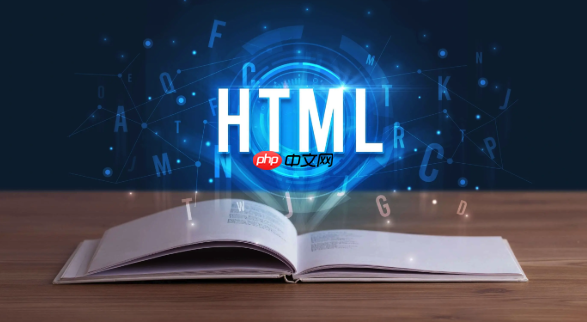使用Canvas和JavaScript创建动态粒子背景,首先设置全屏画布并定义粒子类,包含位置、速度、大小和颜色属性;通过requestAnimationFrame实现动画循环,结合鼠标交互使粒子受光标影响移动,并在边界重置;为提升视觉效果,可采用拖尾、渐变色、粒子连线等技巧,同时优化性能,如控制粒子数量、使用对象池和避免冗余计算,最终实现流畅的交互式粒子背景。

要实现粒子背景效果,核心是使用 HTML5 的 Canvas 元素结合 JavaScript 动态绘制和更新画面。虽然 HTML 本身没有“函数”这一说法,但通过 JavaScript 操作 Canvas 可以实现高级视觉效果。下面详细介绍如何用 Canvas 制作一个动态粒子背景,并分享一些高级技巧。
首先准备一个全屏的 Canvas 画布,并设置基础样式与上下文。
<canvas id="particleCanvas"></canvas>
<style>
body {
margin: 0;
overflow: hidden;
background: #000;
}
canvas {
display: block;
}
</style>
<script>
const canvas = document.getElementById('particleCanvas');
const ctx = canvas.getContext('2d');
<p>// 设置画布尺寸为窗口大小
canvas.width = window.innerWidth;
canvas.height = window.innerHeight;
</script></p>接下来定义粒子对象的基本属性:位置、速度、大小、颜色等。
class Particle {
constructor(x, y) {
this.x = x;
this.y = y;
this.size = Math.random() * 5 + 1;
this.speedX = Math.random() * 3 - 1.5;
this.speedY = Math.random() * 3 - 1.5;
this.color = 'rgba(255, 255, 255, 0.8)';
}
<p>update() {
this.x += this.speedX;
this.y += this.speedY;
if (this.size > 0.2) this.size -= 0.05; // 粒子逐渐缩小
}</p><p>draw(context) {
context.fillStyle = this.color;
context.beginPath();
context.arc(this.x, this.y, this.size, 0, Math.PI * 2);
context.fill();
}
}</p>以上就是html函数如何制作粒子背景效果 html函数Canvas画布的高级技巧的详细内容,更多请关注php中文网其它相关文章!

每个人都需要一台速度更快、更稳定的 PC。随着时间的推移,垃圾文件、旧注册表数据和不必要的后台进程会占用资源并降低性能。幸运的是,许多工具可以让 Windows 保持平稳运行。

Copyright 2014-2025 https://www.php.cn/ All Rights Reserved | php.cn | 湘ICP备2023035733号